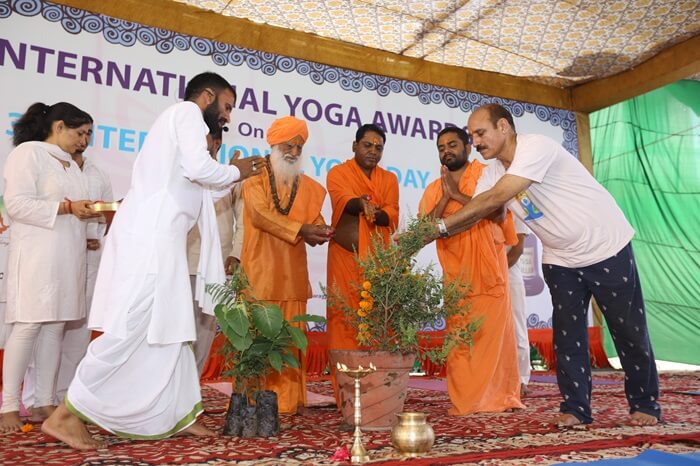Janu Sirsasana: The Head-to-Knee Pose
Janu Sirsasana is a seated asana and is a part of Ashtanga Yoga. It is a Sanskrit word where “Janu” means knee, “Sirsa” means head, and “asana” means posture. While performing this asana, your head touches your knee, which is why it is also called Head-to-Knee Pose, Head on Knee Pose, or Head on Knee Forward Bend Pose. Although it is often compared to Sirsasana, it is entirely different.
Beginners can engage in this activity without any prior experience as a professional yogi or sportsperson. This pose re-energizes the body while alleviating anxiety, providing a calming effect. Practicing it early in the morning can boost your energy for the rest of the day.
Benefits of Janu Sirsasana (Head-to-Knee Pose)
There are plenty of benefits of the head-to-knee pose:
- Calm Your Brain and Relieve Stress: Practicing this pose can calm your brain and relieve stress. It reduces anxiety levels and promotes wellbeing with a deep sense of calmness.
- Stimulates Organs: This pose stimulates the kidneys and liver by placing pressure on body organs using acupressure therapy. It benefits organs like the stomach, uterus, pancreas, kidney, and spleen.
- Improves Digestion: The pose improves your digestive system by strengthening your lower abdomen, boosting immunity, and speeding up metabolism.
- Stretches Major Muscles: It stretches the shoulders, hamstrings, groin, and back muscles, reducing stiffness and enhancing flexibility.
- Alleviates Insomnia, High Blood Pressure, and Sinusitis: This pose helps open up blocked energy channels, controlling high blood pressure, treating insomnia, and relieving sinusitis.
- Supports Pregnancy: It strengthens the back muscles during pregnancy, stretches the back and gluteal muscles, and relieves leg fatigue.
- Eases Menstrual Discomfort: Practicing this pose before your menstrual cycle can ease the process and reduce pain.
- Benefits Runners: Runners can use this pose to warm up and cool down, stretching their legs and enhancing performance.
- Harmonizes the Body: The stretch on both sides of the body balances the human body, reduces sciatica, and encourages even blood flow in the nerves.
How to Perform Janu Sirsasana
- Sit with a straight back on the floor.
- Stretch your right leg out and bend the left knee, placing the left foot’s bottom on the inner part of the right thigh.
- Ensure your navel and chest align with the right leg.
- Support your body with your hands by placing them beside your hips.
- Take a deep breath and extend the torso and belly to the top of your head.
- Stretch your arms up, bend down, and try to reach your toes or ankles. Don’t overstretch if it becomes difficult.
- Stay in the position and breathe.
- Take a deep breath and gently release. Repeat with the left leg stretched out.
Contraindications of the Pose
- Those suffering from asthma and diarrhea should avoid this asana.
- People with lower back injury or lumbar disc herniation should avoid the pose.
- In case of knee injury, a blanket can be used as support.
Yoga is a perfect exercise that encompasses physical, mental, and spiritual health. It enhances clarity, body movements, flexibility, and a peaceful state of mind. With the Janu Sirsasana pose, let your stretches calm your body and mind.
To learn more about these wonderful yoga asanas in further detail, explore our Yoga Teacher Training in India.
Conclusion
Janu Sirsasana offers a multitude of benefits for both the body and mind. This head-to-knee pose enhances flexibility, improves digestion, alleviates stress, and supports overall wellbeing. Whether you are a beginner or an experienced yogi, incorporating this asana into your daily routine can lead to significant health improvements. For more in-depth training and to deepen your practice, consider enrolling in our 200-hour Yoga Teacher Training in Kerala, 300-hour Yoga Teacher Training in Kerala, or 500-hour Yoga Teacher Training in Kerala. Visit our homepage for more information and embark on a transformative journey with Rishikul Yogshala.















